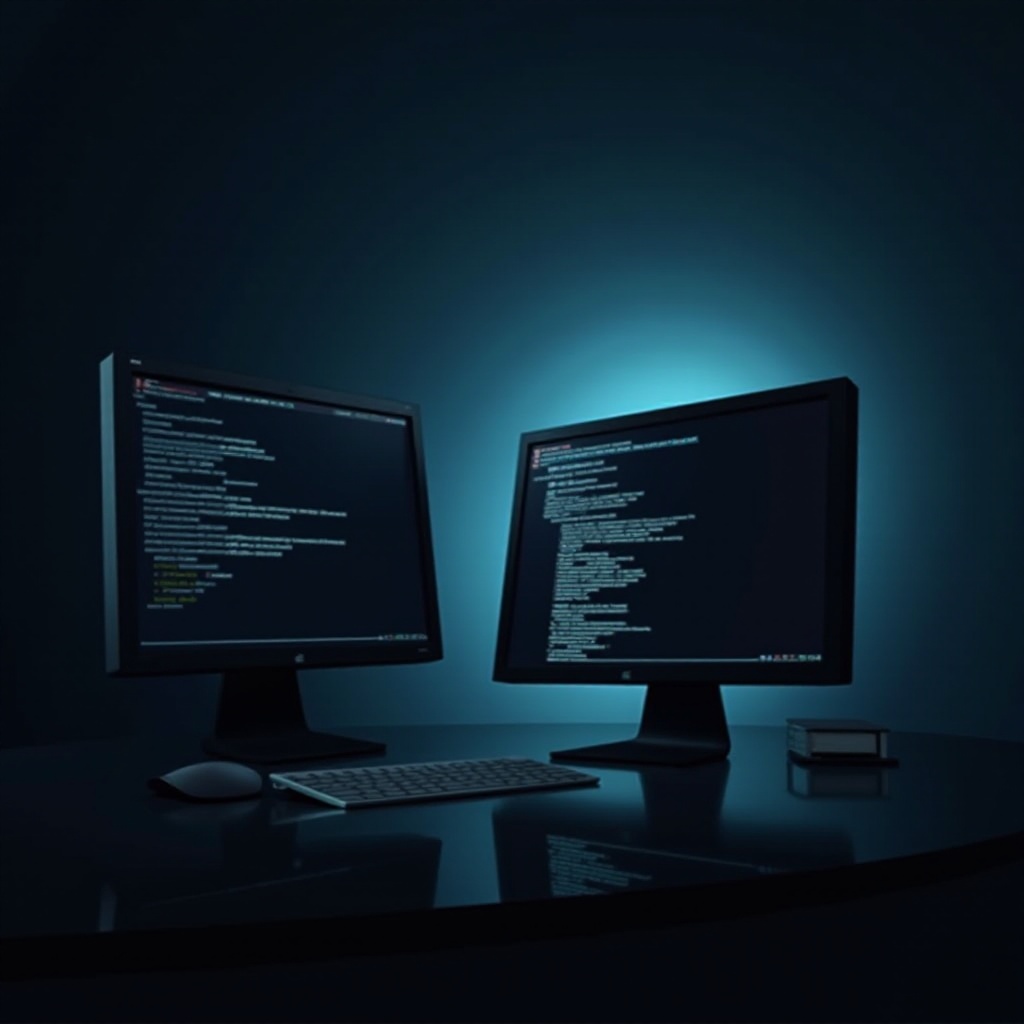Introduction
A ghost monitor can be a frustrating issue for Linux users. It manifests as a non-existent display that appears in your system’s display settings, causing clutter and confusion. Understanding how to address this problem can improve your productivity and streamline your workspace. This comprehensive guide covers what ghost monitors are, how to identify them, and how to remove these phantom displays from your system. Additionally, we will explore preventative measures to keep your Linux environment running smoothly.

Understanding Ghost Monitors
A ghost monitor, or phantom display, is a non-existent or inactive display that the operating system mistakenly recognizes as active. This usually occurs due to misconfigured display settings, outdated drivers, or issues in the configuration files. While a ghost monitor might not disrupt your daily tasks, it can create unnecessary complications when managing your screen layout, dragging windows, or adjusting screen resolutions.
What is a Ghost Monitor?
A ghost monitor is essentially an issue where your system recognizes a display that doesn’t exist. This can stem from various issues, such as configuration problems, hardware quirks, or driver anomalies.

Identifying Ghost Monitors in Your System
Knowing when you’re dealing with a ghost monitor is crucial for finding a solution. Identifying these phantom displays will allow you to proceed with the necessary steps to eliminate them. Recognizing the symptoms of ghost monitors forms the foundation for resolving this issue.
Common Symptoms
Recognizing the symptoms of ghost monitors is the first step in resolving the issue. Common signs include:
– Unneeded extra display detected in display settings.
– Applications or windows disappearing onto an unreachable screen.
– Problems with mouse cursor unexpectedly switching to an off-screen display.
– Difficulty in setting up real monitors due to the presence of a ghost monitor.
Tools and Commands
Identifying ghost monitors involves using built-in Linux tools and commands:
– xrandr: A powerful command-line utility to manage and configure display settings.
– lshw -C display: Provides detailed hardware information, including connected displays.
– cat /var/log/Xorg.0.log: This command helps identify miscommunication between the system and connected displays.
Utilizing these tools will help you determine if a ghost monitor exists and gather the necessary information to address it. Once you’ve identified the ghost monitors, you can move on to the removal steps.
Step-by-Step Guide to Remove Ghost Monitors
There are several methods you can employ to remove ghost monitors in Linux. Here, we focus on three primary approaches:
Using xrandr
- Open your terminal.
- Run
xrandrto list all connected displays. - Identify the ghost monitor, which often appears disconnected or non-active.
- Remove it by running the command
xrandr --output <ghost-monitor-name> --off.
Editing Configuration Files
- Open your terminal.
- Navigate to the X11 configuration directory:
cd /etc/X11/xorg.conf.d/. - Edit the configuration file related to displays (typically
10-monitor.confor similar) using a text editor like nano:sudo nano 10-monitor.conf. - Locate the section defining the ghost monitor and either comment it out or remove it.
- Save your changes and restart your display manager or reboot your system.
Adjusting Display Settings via GUI
If you prefer a graphical user interface (GUI) method for removing ghost monitors, follow these steps:
- Open your system’s display settings through the Control Panel or Settings Manager.
- Locate the ghost monitor in the display arrangement section.
- Select the ghost monitor and either disable or remove it.
- Apply the changes and ensure the ghost monitor is no longer listed.
Troubleshooting Persistent Issues
Persistent ghost monitor issues can be tricky to resolve, but following these additional steps often helps:
Checking Display Drivers
- Ensure that you are using the latest display drivers.
- For NVIDIA, run
sudo apt-get install nvidia-driverfollowed bysudo nvidia-xconfig. - For AMD or Intel, verify compatibility and update drivers through the system’s package manager.
Resetting Display Manager Settings
- Open the terminal.
- Reset your display manager settings by running
sudo dpkg-reconfigure lightdm(replacelightdmwith your display manager, likegdmorsddm). - Reboot to see if the ghost monitor has been removed.
Handling Multi-GPU Setups
- Ensure proper configuration of multiple GPUs using xrandr or NVIDIA Settings for systems with multiple GPU cards.
- Check for misconfigured outputs that might present ghost monitors as part of the multi-GPU interface.
Best Practices for Preventing Ghost Monitors
Implementing best practices can significantly reduce the occurrence of ghost monitors:
Proper Connection and Disconnection
- Always use proper connectors and ensure cables are securely connected.
- Power off displays properly before disconnecting them to avoid automatic reconfiguration that can lead to ghost monitors.
Regular Updates and Maintenance
- Keep your Linux system and applications updated to the latest stable version.
- Regularly check for and update display drivers to prevent compatibility issues.
- Perform routine maintenance by checking and clearing irrelevant configuration files from the system.

Conclusion
Ghost monitors can be a nuisance, but with the right information and tools, you can effectively identify, remove, and prevent them. By understanding the root causes and following the steps listed above, you will maintain a clean and efficient display setup in your Linux environment. Addressing ghost monitors promptly ensures optimal use of your workspace and enhances your overall user experience.
Frequently Asked Questions
What causes ghost monitors in Linux?
Ghost monitors are typically caused by misconfigured display settings, outdated drivers, or issues within the system’s configuration files.
How can I permanently remove a ghost monitor?
You can use the `xrandr` command, edit configuration files, or adjust settings via the GUI to permanently remove ghost monitors from your system.
Are ghost monitors a sign of hardware failure?
Ghost monitors generally do not indicate hardware failure. They are more often related to software or configuration issues within the operating system.